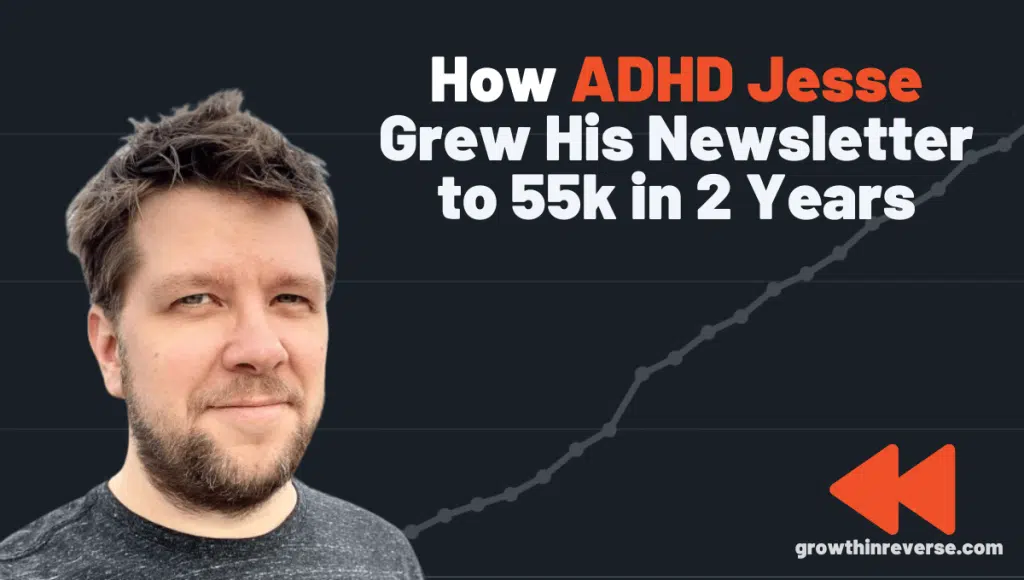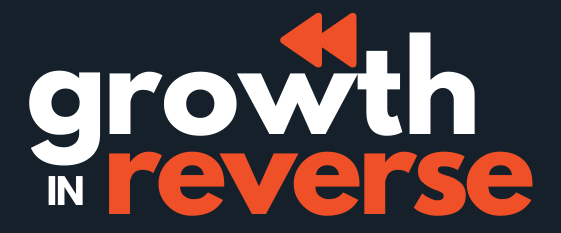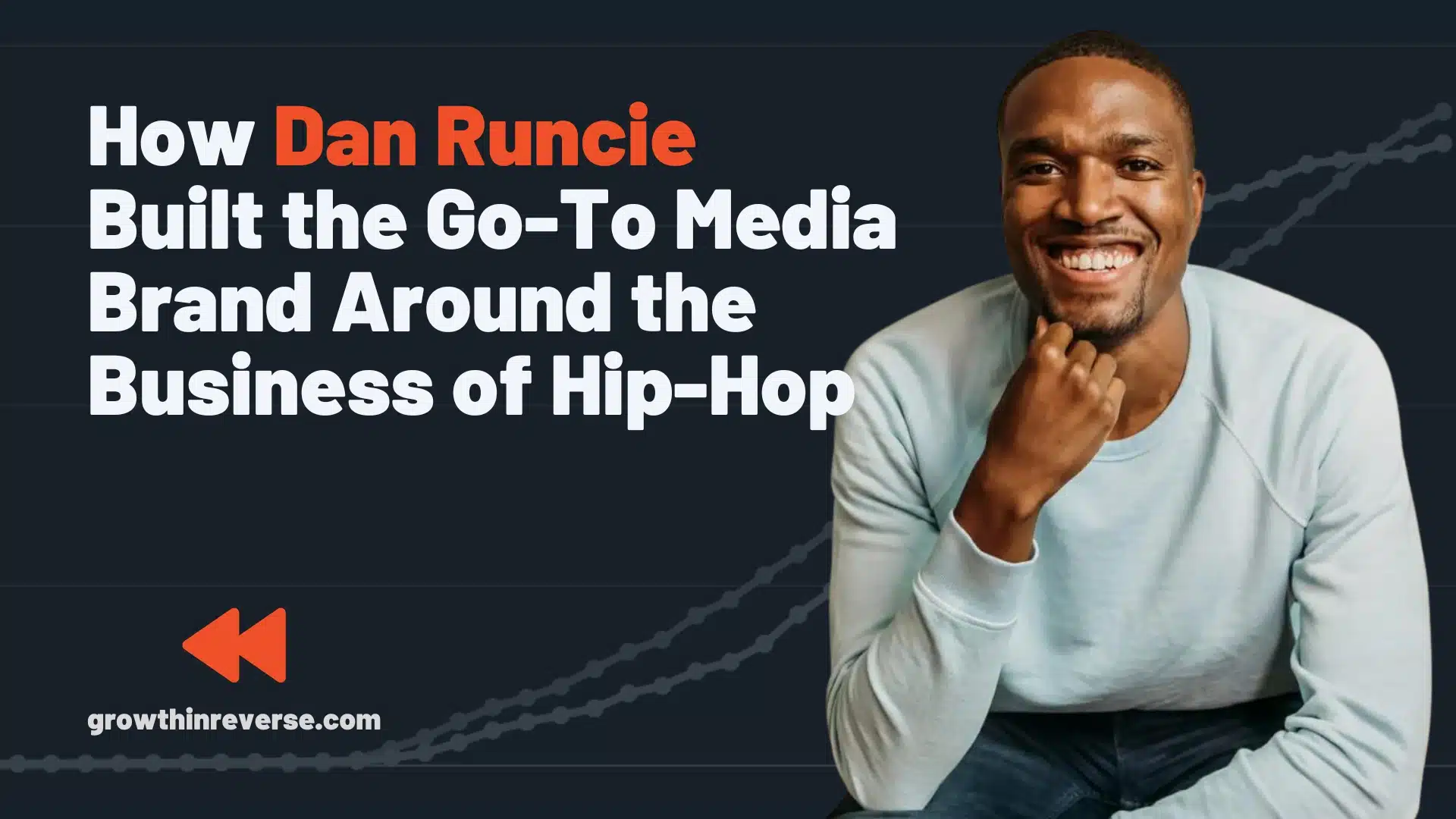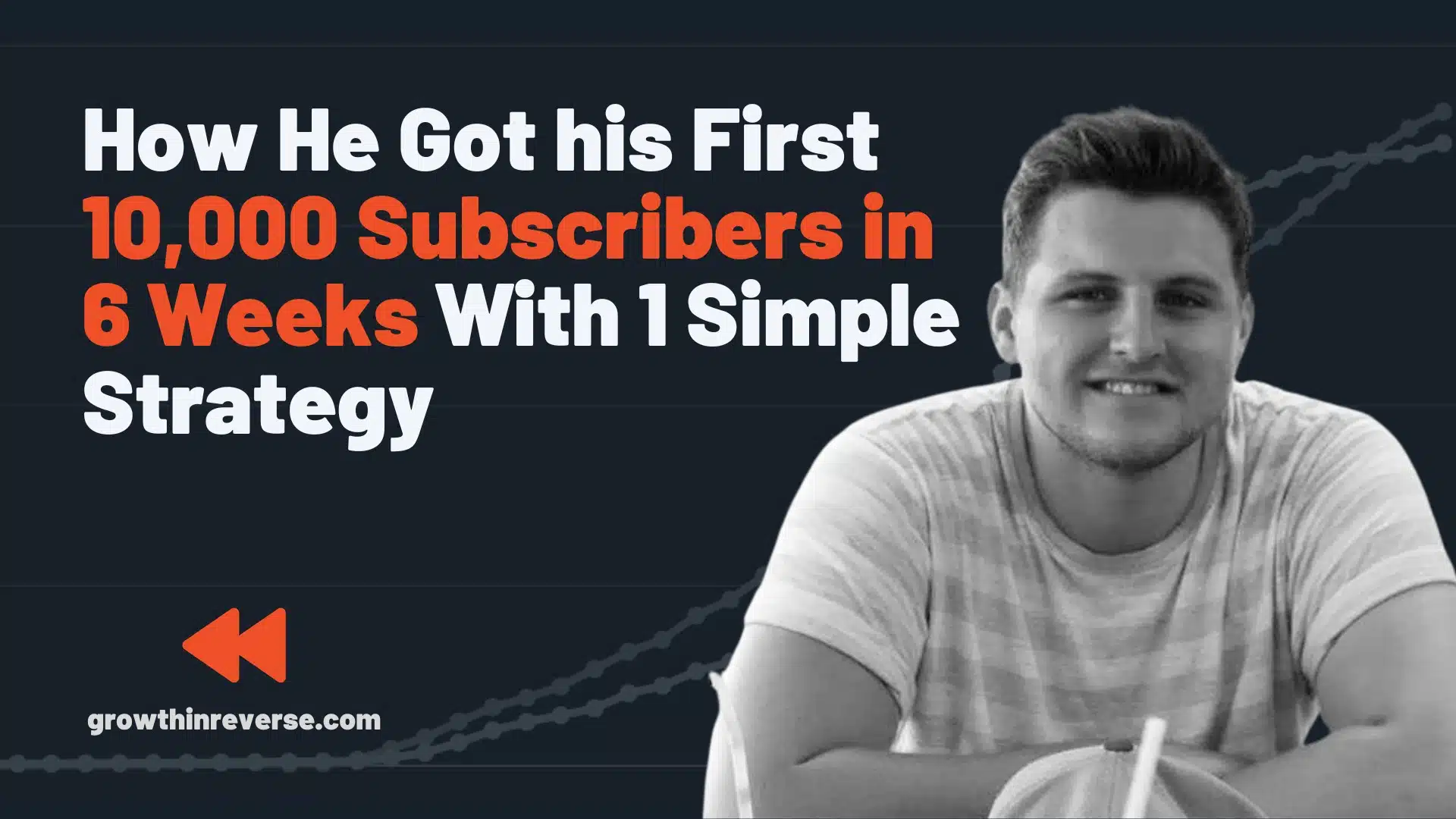Jesse Anderson has a full-time job as a web developer, but that didn’t stop him from building an email list of over 57,000 people in 25 months.
Jesse has tried all kinds of platforms to grow his audience. And it’s led to a lot of followers:
- 122k on Twitter
- 127k on Instagram
- 40k on YouTube
- 62k on TikTok
And these have led to his newsletter, Extra Focus, gaining over 57k subscribers.

How Jesse Makes Money
Jesse still has a full-time job, so it seems like money is secondary at the moment.
Which in some ways is awesome because he’s been able to just focus on creating free content and using that momentum to grow.
He’s starting to pull some levers to make money so he can take this full-time.
Here are some of the ways he’s started to grow revenue.
Paid Subscriptions
In January, Jesse moved his newsletter to Substack and turned on paid subscriptions.
You can pay monthly for $8, or opt for the annual option at $80 for the year.

I like this model because it’s helping creators earn a living while also being super affordable.
Of course, I signed up for research purposes 🙂
Premium members get access to:

The discussion threads seem like they’re going to be a huge community booster, because you can all connect with one another around a specific topic.
So far, Jesse has around 100-150 paid subscribers, so while it’s not bringing in enough revenue for him to quit his job quite yet, I’m sure it will get there over time as the newsletter continues to grow.
YouTube Ads
While Jesse isn’t super consistent with posting on YouTube (likely due to lack of focus), he mentioned that it is bringing in enough revenue to take it more seriously in the future.
Polar Habits
Jesse is also working on a habits app called Polar Habits.
This app helps people who don’t work well with the typical “habits” trackers where if you break the chain you start again at zero.
There is a paid option, but they haven’t quite pushed that out much yet.
All of this to say that he’s not making a ton from his newsletter quite yet.
But I have a feeling that’s going to change as he starts focusing more on being able to go full-time with this.
The Growth Timeline
Jesse has exploded this newsletter and his social following since deciding to go all in on ADHD content (Jan/Feb 2021).
His story is really exciting because he’s tried a lot of things and stuck with what worked.

You can see that he tried TikTok for a while, but then realized after a while that it wasn’t the platform for him.
I love seeing charts like this one, because not everything is just up and to the right. He found early success, but then didn’t or couldn’t stay consistent with it.
Instead, he moved over to more sustainable channels and those are still growing to this day.
The Growth Levers of ADHD Jesse
Here are some of the growth levers that helped Jesse explode his brand in such a short amount of time.
1. Get super specific. Jesse struggled to find his voice and topic for years. But once he started focusing on ADHD content, his platforms started to take off.
2. Communities are underrated. Jesse joined a writing community, and the accountability and friends he made helped him tremendously. And one recommendation from that group led to 20k followers in just a few weeks.
3. Try multiple platforms, but only stick with what you’re good at and where you’re seeing traction. Jesse went viral on one platform but ultimately gave it up because he couldn’t sustain it.
1. Get Super Specific
Niching down. Going all in.
Whatever you want to call it, you need to pick one topic and go deep.
Don’t confuse this with me saying that you need to stick with the same thing forever.
But once you start testing the waters and trying stuff out, if you find a topic you really love AND people are resonating with it, you need to capitalize on that momentum.
The Importance of Being Specific
Going all in on one topic is really important to fast growth.
Why? There are a few reasons here:
- You become known as the “XYZ person.”
- This makes it easier for people to refer others to you when they have questions about that topic.
- It makes it easier for you to create content.
Before he was writing about ADHD, Jesse was kind of all over the place.
And it was reflected in the response he got on his tweets:

Many of his tweets had no likes, some got 2 or 3.
Until he started posting about ADHD. And then things really started to pick up.

Jesse is a developer and creative guy, but he didn’t see much traction on Twitter or other platforms until he started writing solely about ADHD.
Now he is the ADHD guy through and through.
Even the “side project” he’s building with a friend is focused on helping people with ADHD build better habits.
Everything Jesse shares, talks about, or even writes has something to do with ADHD.
2. Be Part of a Community
Shortly after he decided to focus on ADHD, Jesse started Ship 30 for 30 on February 15th.
He wrote an atomic essay every day for 30 days, or at least got close to that.

You can see how things started to take off for him.
This is also around the time when he started his newsletter so he had a place to drive people to.
Things were going well, but someone in that group made a recommendation that would lead to a huge number of followers in a short amount of time.
3. Try Multiple Platforms, But Stick With What’s Working
I mentioned that Jesse tested out a few platforms before sticking with one that was working.
He got the idea to start posting his daily content on TikTok from someone in the Ship 30 cohort he was in.
He figured he would give it a go and started posting the written content from those atomic essays as short-form videos.
He saw A LOT of success.
He started the channel in February and by the end of the month had almost 30k followers there…in one month!
Apparently, there was a shortage of ADHD content on TikTok and he was able to capitalize on it.
Here’s a zoomed-in look at the growth timeline to show you this in context.

Look at that massive spike!
Jesse was creating content there for a year, posted 104 videos, and got to around 60k followers.
And then he stopped.
No more videos, not more tweeting about his TikTok journey, nothing.
I’m not sure if the dopamine started to wear off because he wasn’t growing by 25k followers every month, or if short-form video just isn’t his thing. Or both.
But he even expressed a little dig at TikTok a few months later in this tweet:

Although he threw in the towel on TikTik, he was still growing steadily on Twitter and had started sharing his posts on Instagram.
Jesse started consistently posting on Instagram in September of 2021. When he started doing that, he had around 400 followers there.
He had posted 3 times before that in February, and they had decent success, but he stopped posting after that until September.
Shortly after he restarted posting on IG, a huge ADHD account reshared one of his Instagram reels and tagged him.

This got over 26,000 likes and drove Jesse a ton of new followers.
At the time he tweeted this, he had gained 400 followers from there.
But from September to October he went from 400 to 6,600 followers – so I’m sure he got more than that.
Pretty crazy!
Jesse’s IG Content Strategy
What I love about Jesse’s Instagram strategy is that he’s just resharing screenshots of tweets.
Is he only posting the best tweets? Not exactly.
Most of the tweets he posts are reshared to Instagram, as long as they are on topic and work as a solo image post.
Sometimes the tweet gets minimal engagement but on Instagram, it gets a ton of engagement.
And the cool thing is that Instagram is a platform Jesse has still consistently kept posting to. It’s clearly working, and it’s how I found Jesse in the first place.
The reason I love this strategy is because it’s much more simple than creating unique content for that platform.
While he could probably grow much faster by posting a lot of short-form videos, we’ve seen from his past that it might not be sustainable.
The moral of this story is to try a few things and then stick to the ones that gain traction and are ones you can be consistent with.
Mini-Carousels on Instagram
One of the interesting things I found that I haven’t seen a ton of newsletter creators doing is creating a mini-carousel with every post.
He has his repurposed tweet with a colorful background, and then the second one is a shoutout for his newsletter.
From what I can see, it actually looks like his posts got way more engagement when they were standalone posts, but he might be able to see more subscribers coming from the platform and so he keeps doing it.
Jesse’s Twitter Strategy
Jesse is doing something really intriguing with his Twitter profile.
While a lot of creators are testing out tweets and just later turning them into threads, Jesse takes it a step further.
Similar to Dickie Bush, Jesse links back to relevant content. But is also repurposing his articles as well.
Repurposing Articles
A few days ago, Jesse tweeted this:
And it went quite viral because a lot of people with ADHD struggle with this.
He posted it at 330am EST, so people seeing it, at least in the US, at that time were probably struggling with this at that exact moment.
He let the tweet get quite a bit of traction, and then once it hit a specific number, he plugged the exact article related to that tweet.

So, he’s posting relevant content at a relevant time. Then he lets the algorithm see that people like the content before posting a link, because we all know Twitter will hide your content if you do that.
The post goes viral, and then he gets to siphon some of that traffic to his website.
Super smart right?
We’re not done.
Jesse is on Substack, so when people go to that article and scroll just a little bit, they see this:

He’s hitting the right person at the time with the right message. I guarantee this is driving subscribers for Jesse.
I’m a huge fan of this strategy.
The “Hey, I also made this thing for you” Strategy
I really like this strategy because it comes off as a super down-to-earth way of pushing people toward your other content.
If a tweet does well, he’ll create additional content and then link to it within the comments of the initial tweet.
Here’s an example:
Jesse wrote that tweet on September 7th, and the next day he posted something on the same topic, but as a visual instead.
He went back to that original tweet that did well, and commented saying he had this new thing too.
That “I made this other thing” tweet got 735 likes.
By capitalizing off a tweet that’s already done well, he’s helping the new piece of content get eyeballs on that as well.
And on that second post, he plugs his newsletter an hour after he initially posted it.
Instead of letting tweets that do well just die, he’s building on the momentum he’s already created by adding to them.
Multiple Calls to Action
When you use a tool like TweetHunter, you can set what are called “auto plugs.” So if your tweet gets X number of likes, the tool will automatically add another tweet that has whatever want in there.
Most people will plug their newsletter – which Jesse does as well. But he also uses a “multiple plug” strategy.
Here’s an example.
Because there are so many people with ADHD, a lot of his tweets often go viral.

When that happens, Jesse has multiple calls to action that he can plug.
First, he plugs his newsletter.
But because the tweet kept going viral, he adds a plug for his YouTube channel as well.
How You Can Replicate These Successes
While Jesse has landed on what seems like a goldmine of a niche, there are some things you can take away from this even if you’re not posting about ADHD.
Be More Specific
While Jesse had ADHD and talked about it occasionally. It wasn’t until he drew a line in the sand and made that his topic of choice that he started seeing really great growth.
If you don’t know what your “niche” is yet, try emulating something like Ship 30 for 30, and commit to posting online once per day.
Some people find that while they thought they wanted to write about productivity, once they write 5 threads, they feel like they’ve said everything they want to about the topic.
That’s a good thing!
You need to experiment and test out what people want to hear from you, as well as what you enjoy writing about.
Once you find the topic you like and that gets some traction double down on that thing.
Marketing and content strategy is all about momentum, so you just need to keep writing and posting about that topic. The more you write, the more questions people will ask you, and you can use those as future topics.
Join a Community
Being part of Ship 30 for 30 in February of 2021, was enough to help Jesse be consistent writing online every day.
I know I’ve mentioned it a few times here, but it doesn’t have to be Ship 30 – you can join another writing group, or heck, make your own!
There is a group called NaNoWriMo where people commit to starting to write their book, or even just a writing habit on the same day.
It’s kind of a big thing. But there have also been spinoffs like:
- One for poetry
- One for podcasting
- One for drawing
People love challenges, so with a little searching I’m sure you can find a group that caters to your specific idea.
Try Different Platforms, But Focus Once You Find Traction
Things are changing, and while Twitter has historically been a great platform for growing your newsletter, who knows how long that will last.
At the same time, while you might see some good growth on a platform like TikTok, if you’re not inherently a video person, then it might not be the right one.
While you want growth, making sure you don’t burn out so that you can stay consistent is more important.
I think that’s exactly what Jesse did.
He saw really incredible growth on TikTok, but it wasn’t sustainable for him.
So he focused on Twitter, and repurposes his tweets over to Instagram. It’s the same, or very similar content, just copy and pasted over to Instagram in the native format.
If I’ve learned anything about creators, it’s that you need to be consistent even if your content is amazing. Unless your name is Tim Urban, but it’s not – so just pick something you can do for a while.
Capitalize on the Momentum You Get
While Jesse does this mostly with Twitter, you can replicate it on other platforms, you just need to get creative.
- If a post goes viral, or even semi-viral, capitalize on the momentum and drive people to your newsletter or other content platforms
- Make something similar the following day and comment with that new thing. This will likely show up in the people’s feeds who liked the first post, and they’ll see the second one.
Once the momentum of a post dies down, it’s hard to get that ball moving again. So you really want to squeeze all of the juice out of that moment that you can.
Repurpose Your Old Content
This wasn’t easy for Jesse to do in the beginning either, and he shares a little inside baseball in this tweet.
It took him time to figure it out, and now he just sends his content in a flywheel of sorts.
Even if you start with just repurposing your tweets over to LinkedIn or Instagram, you’re doubling the potential exposure of that piece of content.
Example: Repurposing Growth in Reverse Content
This section is for me because I’ve done a terrible job at this.
Instead of just spending 20 hours on each post and letting it die afterward, I should be repurposing it.
I know this, but I have a mental block every time I think about it. So let’s try and flesh this out.
Some ideas of ways I can do this:
- Sharing mini-tweets about the strategies people are using
- Going deeper into a specific way that person has seen growth
- Compiling similar topics into Twitter threads (these 7 people grew by doing X)
And then below these tweets or LinkedIn posts, I can link to the exact article on that person’s journey.
I hope that was helpful for you to see.
Sometimes it’s hard to picture the way we do this with our own content, so I felt like if you saw it from someone’s content you understand, it could help get those creative juices flowing.
What do you think? How can I be repurposing my past content more effectively?






